Local opposition is mounting to a $250 million intermodal terminal Canadian National aims to build outside Toronto to handle a rising tide of consumer goods imported from Asia.
The terminal, planned for Milton, Ontario, just west of Toronto, received a frosty reception this week at the first of several government hearings that are part of the federal review process, the Globe and Mail newspaper reported.
Four area mayors, as well as the chairman of the Halton region, said they opposed the project, citing noise, truck traffic, and environmental concerns. Residents also told transportation and environmental officials they disagreed with the planned terminal.
CN operates three terminals in the Toronto area, all of which are performing at capacity. The Brampton Intermodal Terminal, the railway’s largest, is hemmed in by development.
The Brampton terminal was swamped by record volume in summer 2017 amid a surge of international traffic from the ports of Vancouver and Prince Rupert, British Columbia. So, CN reopened the dormant Malport terminal nearby, and added cranes and track at both Brampton and Malport.
The goal of that work, as well as 2018 improvements, was to boost Toronto terminal capacity by 15%. This year CN is investing in additional intermodal equipment and infrastructure at Brampton and Malport.
“We have and continue to make capital expenditures at our Brampton Intermodal Terminal to accommodate current demand, but [the terminal] cannot accommodate all of the expected growth in demand for intermodal capacity in southern Ontario,” CN spokesman Jonathan Abecassis says.
The Greater Toronto Hamilton Area, with 6.6 million people, is the fastest-growing region in Canada. The area’s population is expected to hit 10 million by 2041.
With that growth in mind, CN proposed the Milton Logistics Hub in 2015 and requested federal approval for the project in 2016.
The 400-acre terminal proposed for a 1,200-acre site would initially handle four trains per day, CN has said.
“If Milton is approved and built, it would operate independently of our other intermodal infrastructure in the area and will help accommodate the growth taking place in intermodal across the country, including at Canada’s coastal ports,” Abecassis says.
Construction of the terminal hinges on federal approval of the project. If approved, CN estimates the terminal would open in less than 24 months.





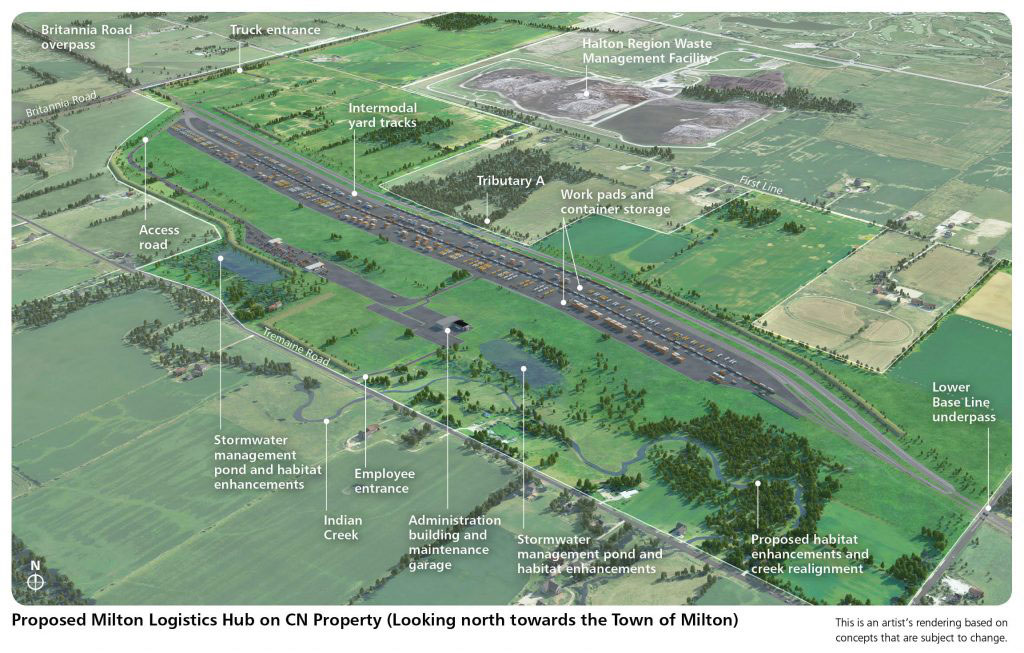

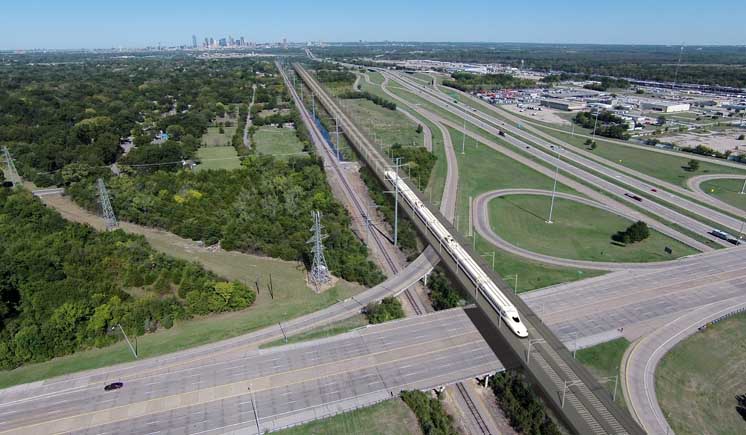
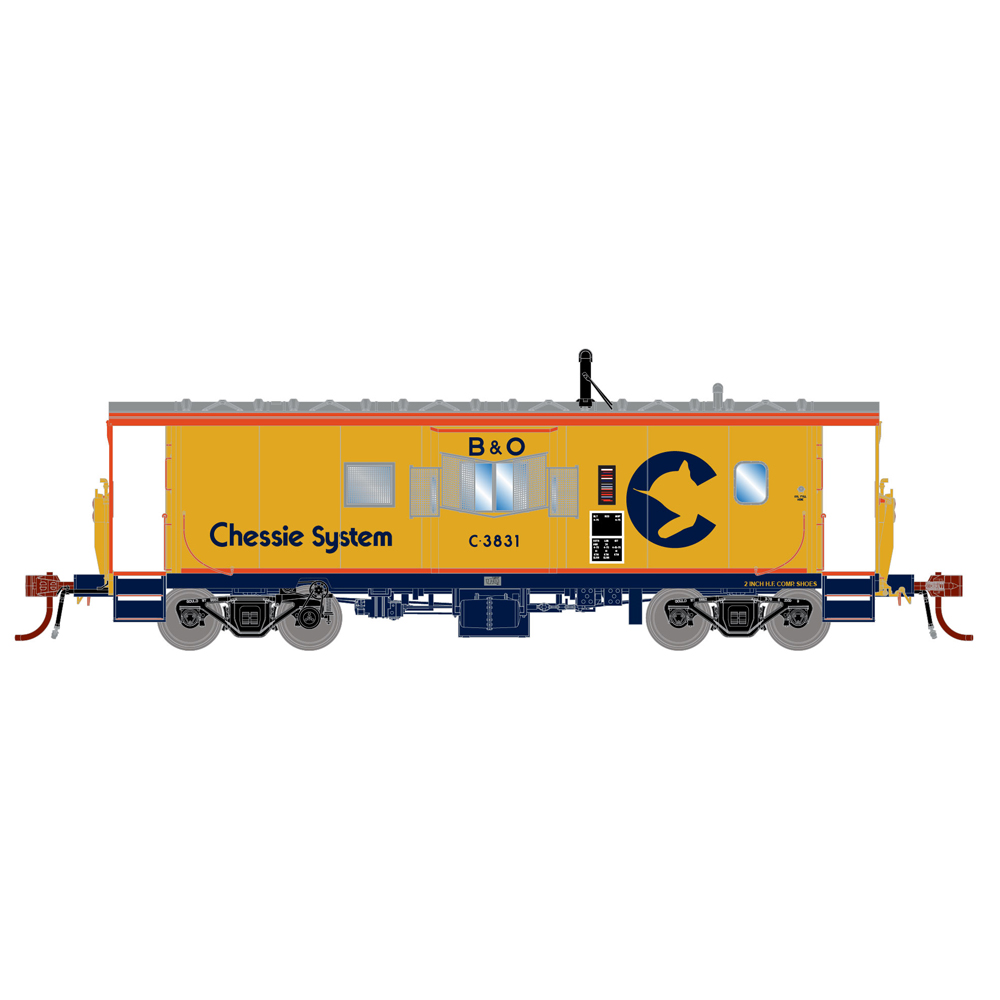
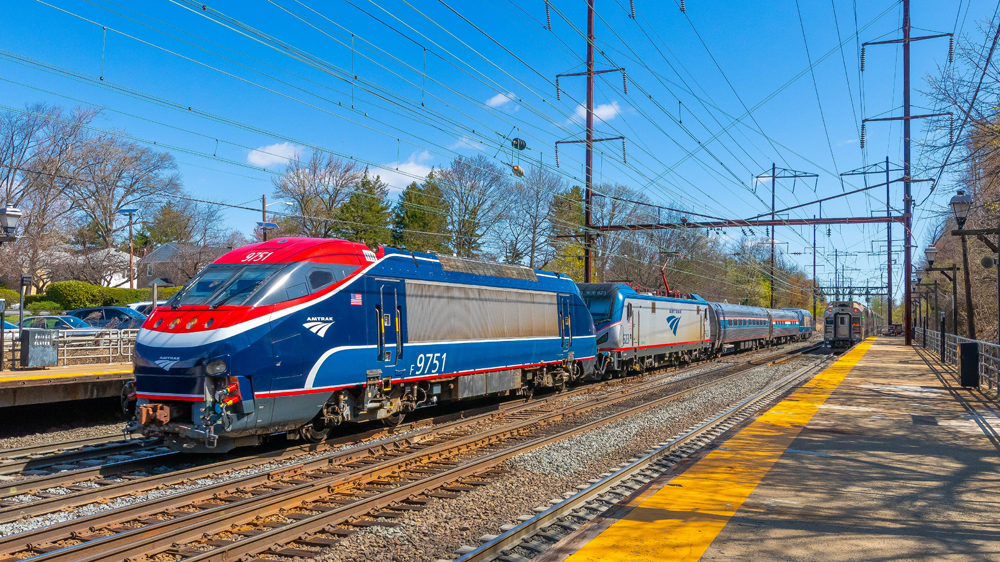
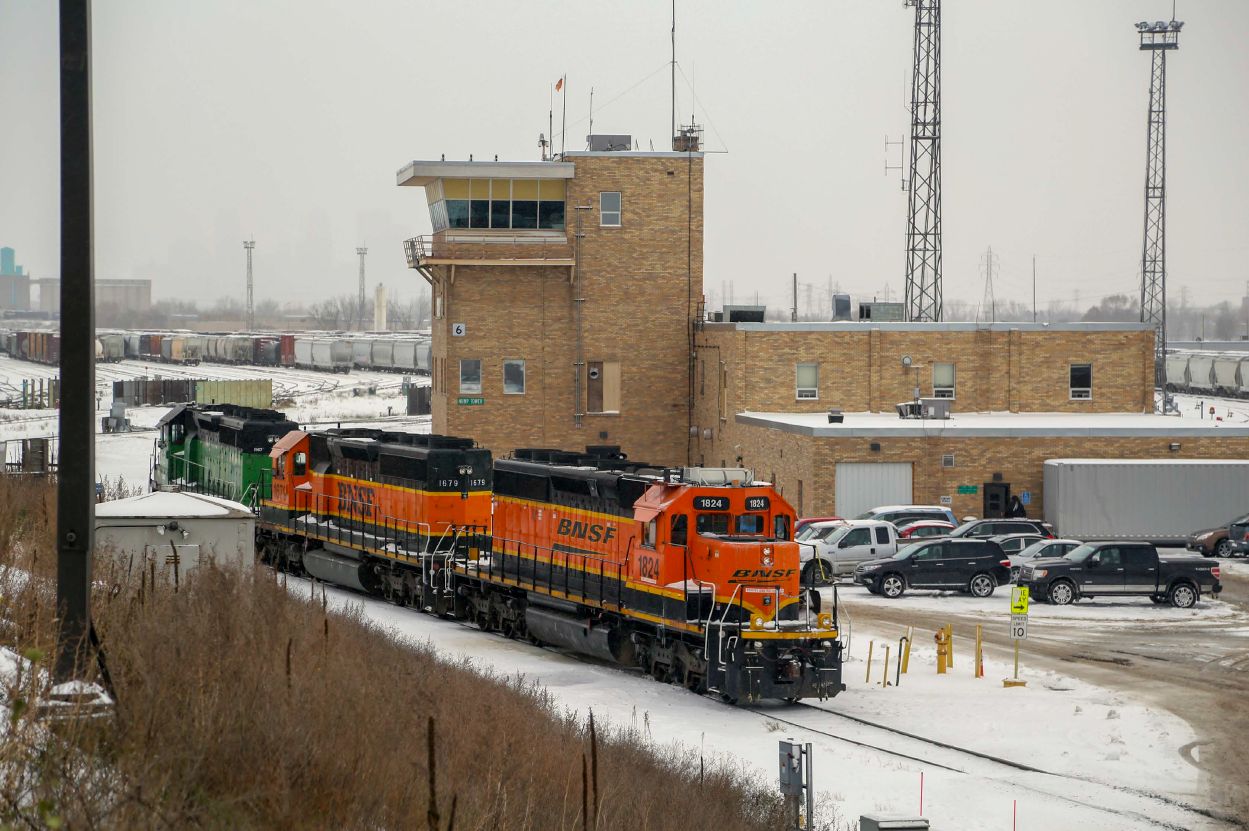




Nowadays any project that might benefit the economy seems to be met with a chorus of whining and complaining from people who live nearby. If people had been like this a hundred years ago we would all still be enduring the standard of living that our ancestors had then, if not worse.
Since CP have virtually abandoned their Expressway Terminal just a few km to the east of Milton, perhaps CN should look at that as a potential site for their new terminal – with running rights over CP from Milton (where CN and CP cross). There is no residential development anywhere close, and it is right by the 401 highway.
This has been going on for YEARS! It is as you can see a rural area with very little residents. It is very hard to find enough property along a main line (CN has tried for years and this is the ONLY place they could find. Expansion of existing intermodle is NOT
W Cook: boxcar traffic is lucrative for the railroads, but do you think that most of the industries that would be served by Milton are on existing rail-served sidings? Of course they aren’t. Intermodal primarily serves consumer industries (and in CN’s case, probably frozen foods, electronics, clothing items, household goods) all coming from Asia; maybe beef from western Canada, too). These items aren’t getting transloaded into boxcar for the trip across Canada.
It’s a good thing they’re no longer calling it the South Halton Intermodal Terminal. The resulting acronym just didn’t play out well.
Let’s hope that any local issue can be resolved and construction proceed. With Brampton maxed-out with Western Canada traffic, and CP apparently not interested in running a railroad anymore in these parts, it has become nearly impossible to grow intermodal traffic in Eastern Canada, and highway 401 is filled with trucks.
The containers will arrive somewhere in the Toronto/Hamilton area so the question is whether or not Milton is the best place to dump them into the road network. From a geographic point of view, Milton is well located for traffic to Toronto, Hamilton and the Niagara Peninsula, and northwest to the growing communities of Kitchener, Waterloo, Cambridge and Guelph.
Toronto area highways are already heavily congested. The limited access east/west highway north of the terminal, 401, is already clogged with traffic. The Queen Elizabeth Way (QEW), south of the proposed site is similarly overloaded. The only limited access highway with capacity available is 407, a toll road not favoured by truckers. CN runs long trains with 10,000 feet not being unusual. Four trains per day ( 2 in, 2 out) at the beginning could dump 20,000 feet of double stacks into the yard with a similar amount leaving. Each car on the train will require 4 truck moves so the number will be in excess of a 1,000 per day.
The truck traffic will concentrate in the Milton area so the residents have every reason to be concerned. Local streets filled with truck traffic will be a major problem. So, could CN move some of the containers closer to their final destination over the rail network rather than dumping them on the highways? Railways don’t like this kind of traffic because it is not as profitable as the long haul and hurts the all important operating ratio. Perhaps the alternative is a requirement for the railway to pay for building and upgrading roads into and out of the terminal area. Roads from the terminal directly to interchanges on 401 and the QEW might help. If that isn’t palatable to the railroad, perhaps a congestion charge on every truck leaving or entering the terminal could fund the road improvements.
Milton is a good location for the terminal but the railroad and the truckers will have to compensate the municipality and the residents for the costs and inconvenience. The railroad and the truckers will have to put real money on the table if they want the opposition to go away.
ROGER – Excellent post. I’ve always been skeptical about massive container lifts. Few containers are lifted in Wisconsin, a state of median population among the fifty. Lifting containers in Chicagoland and I assume Minnesota adds to highway congestion on the I-system, partially negating the advantages of having railroads.
i
Kinda’ reminds me of a garbage landfill…everyone needs it and uses it, but, no one wants it in their neighborhood…go figure.
Is it just me, or is it truly remarkable that these folks want all the toys — fancy food, glitzy electronics, the latest fashions… and are completely unwilling to have the infrastructure to satisfy their greed? Do they think it grows on trees? Perhaps it is parachuted in from the sky? Nitwits.
The 3 arguments, noise, traffic & environment are all mraningless, because no matter where it us built all 3 of those issues will still exist. You might say it could be worse if located in a less convenient location causing trucks to have to travel further causing more pollution. Of course I get it. It’s those NIMBY’s that don’t want it there. Put it in someone elses backyard. But the complaints will be the same.
What’s the big deal? , most or all improvements are on the railroad’s property, according to the rendering shown here. STOP CRYIN!!! These crybabies are the type to say “ I can do whatever I want on my property” yet wanna tell someone else what they cannot put on there property. That applies in Canada and more so in the U.S.A.
@Gerald McFarlane I think the plan is for the city to eventually expand to where this is going. It should still be all industrial though. I did read one article stating that the biggest complaint is that this land was expected to create far more jobs than the intermodal yard would.
There’s a prison in Milton and a whole lot of suburban sprawl …… but I must admit the NIMBY’s do have a point. Those container trains double stack a mile and a half long don’t just disappear, they become hundreds of trucks. I think my mission in life is to point out the ecological cost (traffic and expended energy) of intermodalism – whether a suburban park-ride for Metra, or an airport, or a container lift.
Mr. Cook, I’m guessing the box car idea would not have any advantage over containers. It’s all import items, so it’s loaded in containers overseas, so it would have to be transloaded. Then at arrival many of the unload locations are nowhere near rail sidings, so it would have to be transloaded again.
Maybe the railroads should be more favorable to box car traffic to the existing siding to the same industries that receive the commerce. Cheaper truck rates is not better for the railroad if they have to build new terminal to handle the change in shipping methods. Reduce the rate on box car traffic and use the existing private side track the industries pay for.
Why are these governments not interested in the high paying jobs that will come to their community along with significant tax revenue?
Based on that photo and concept work it’s not close to anything…so just who is going to be affected by this in the short term? Certainly no one that is complaining about it at the hearings.